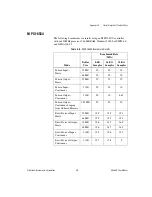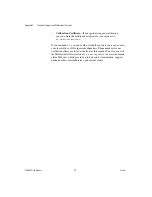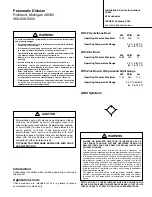
Appendix E
Optimizing Your Transfer Rates
E-2
ni.com
Obtaining the Fastest Transfer Rates
To achieve the highest transfer rates possible, consider the following:
•
Burst mode is the fastest handshaking protocol. You can further
increase speed by using short cables.
•
Finite transfer is faster than continuous transfer.
•
Minimize the number of other I/O devices active in the system. Your
system bus should be as free as possible from unrelated activity.
•
Use the NI 6534, which has onboard memory. If you are using an
NI 6533, you can connect it to an external FIFO using the burst
handshaking protocol and clock data out of the FIFO to the peripheral
device.
•
Output looping from the NI 6534 onboard memory is faster than
regenerating output from the NI 6533.
•
DMA transfers are faster than interrupt-driven transfers, especially for
pattern I/O. Refer to Table E-2 to determine whether your device
supports DMA transfers. If DMA transfers are available, the software
uses DMA transfers by default.
Handshaking Long Pulse
2.86
Handshaking Trailing-Edge Pulse
1.67
Handshaking Burst
20
Pattern I/O
20
Table E-1.
Peak Transfer Rates Based on Mode and Protocol Used (Continued)
Mode/Protocol
Peak Rate (MS/s)
Содержание NI 653 Series
Страница 1: ...PCI 6533...
















































